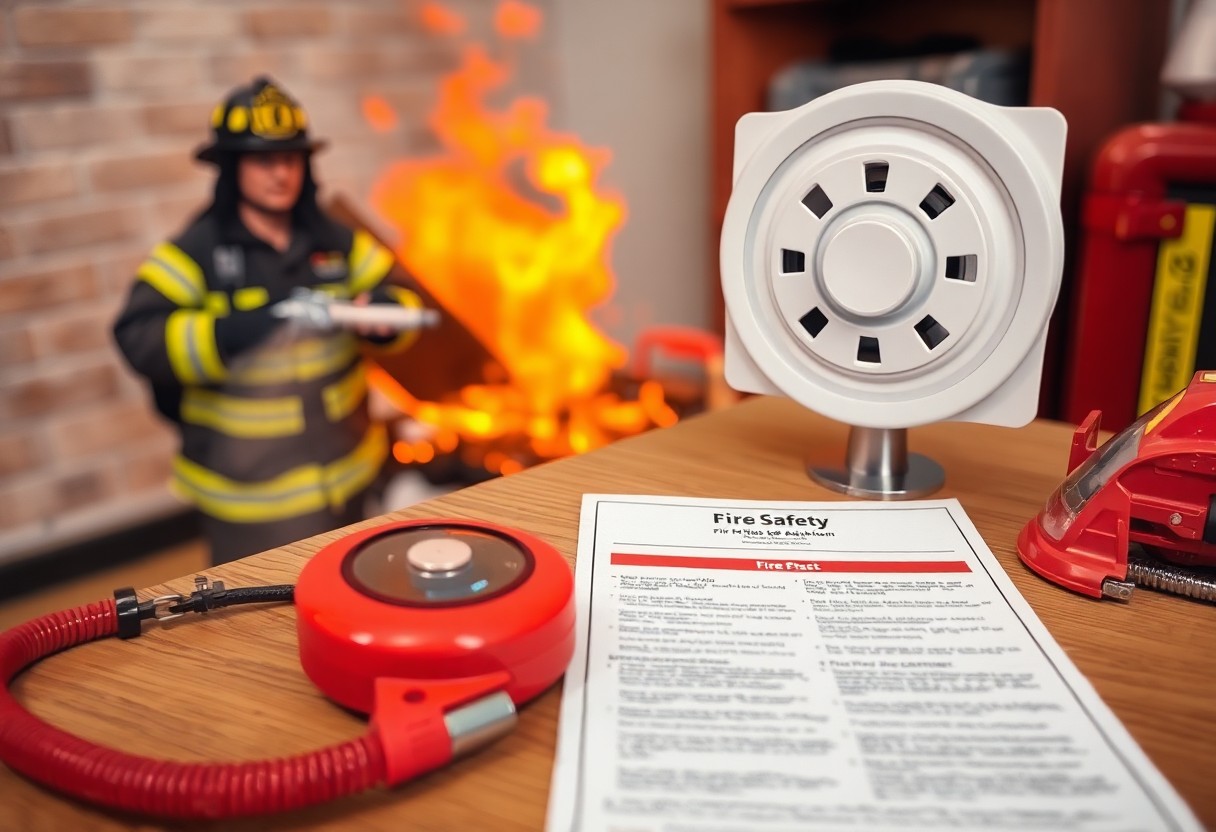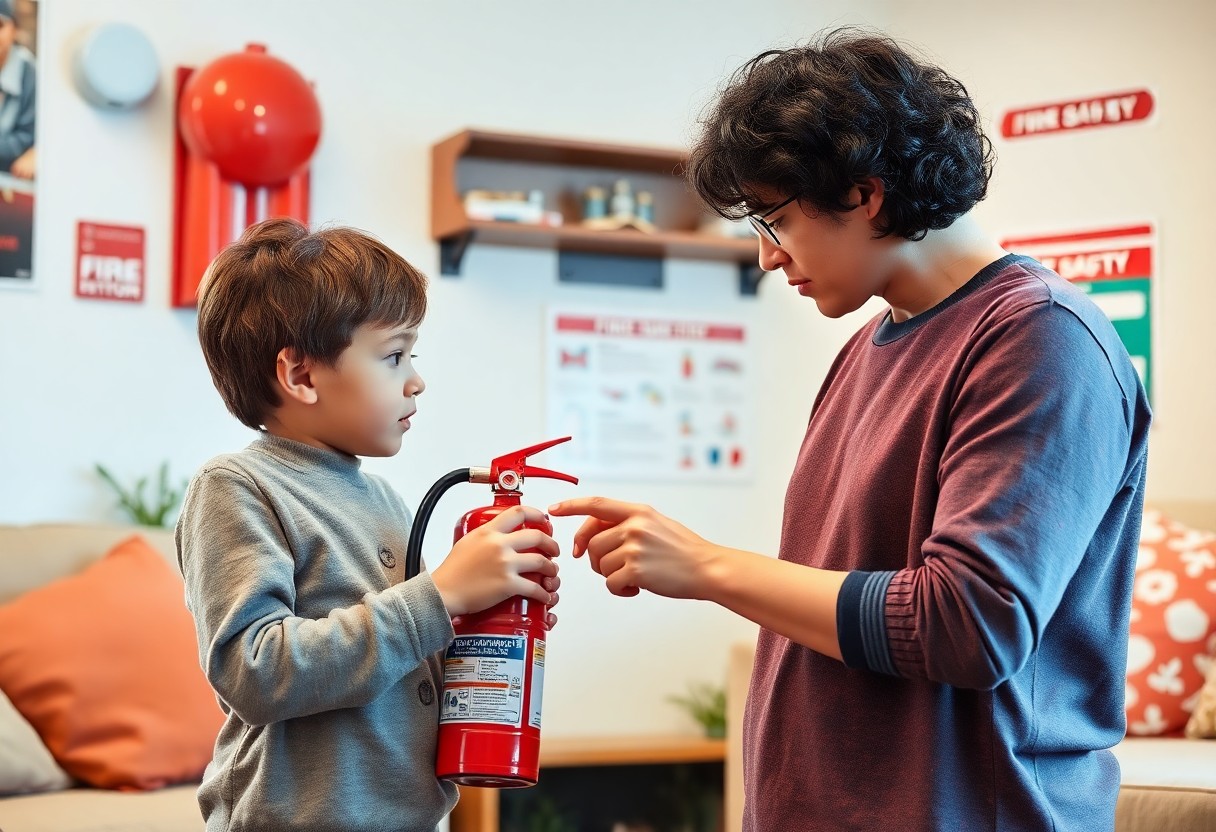There’s no doubt that fire safety is a fundamental aspect of managing any business. Understanding how to protect your workplace from fire hazards is vital for ensuring the safety of your employees and safeguarding your assets. In this post, you will learn the key components of creating an effective fire safety plan, empowering you to take proactive measures that can mitigate risks and enhance your readiness in the event of an emergency. Let’s examine into actionable strategies that will help you keep your workplace secure.
Understanding Fire Risks in the Workplace
Before you can effectively protect your workplace from fire hazards, it’s vital to understand the various risks your environment may face. Each business is unique, influenced by factors such as industry, layout, and equipment used. By analyzing these risks, you can make informed decisions to mitigate potential fire emergencies, ensuring the safety of your employees, property, and operations.
Common Causes of Workplace Fires
On many occasions, workplace fires start due to overlooked factors or routine activities that can ignite unanticipated hazards. Common causes include electrical malfunctions, improper storage of flammable materials, cooking equipment, and human error, such as negligence in handling combustible items. Identifying these risks within your specific work environment can lead to more effective fire prevention strategies.
Identifying Vulnerable Areas
Along with knowing common causes, pinpointing vulnerable areas within your workspace is vital for fire safety. These areas may include places where flammable materials are stored, equipment that generates heat, or locations with limited access to emergency exits. Evaluating these factors can help you prioritize where to implement safety measures.
It’s important to conduct a thorough inspection of your workspace to identify these vulnerable areas. Look for cluttered spaces, improper storage of hazardous materials, and locations that lack adequate fire suppression equipment. Regular assessments and maintenance can significantly reduce fire risks, promoting a safer work environment for everyone. By highlighting these areas, you can develop targeted strategies to bolster fire safety measures and create a more secure atmosphere.
Developing a Fire Safety Plan
There’s no doubt that a well-structured fire safety plan is vital for your workplace. This plan not only outlines procedures to minimize fire risks but also details how to respond effectively in case of an emergency. By systematically identifying potential hazards and establishing clear protocols, you will enhance the safety of your employees and your operations.
Key Components of a Fire Safety Plan
An effective fire safety plan includes several key components: clear evacuation routes, designated assembly points, employee training, and regular fire drills. It’s also necessary to detail the responsibilities of each team member, ensuring everyone understands their role in maintaining a safe environment.
Coordination with Local Fire Departments
Around your workplace, building a strong relationship with local fire departments can significantly enhance your fire safety efforts. Engaging with these professionals allows you to gain insights into best practices, as well as assistance with inspections and training sessions for your team.
In fact, local fire departments often offer resources such as fire safety training, presentations, and site assessments tailored to your workplace. By collaborating with them, you can ensure that your fire safety plan aligns with community standards and regulations, while also fostering direct lines of communication in case of an emergency. Their expertise can provide valuable insights that will strengthen your response strategies and ultimately safeguard your employees and property.
Employee Training and Awareness
There’s no doubt that effective fire safety starts with informed employees. Ensuring that your staff is trained and aware of fire risks and safety protocols is fundamental to protecting your workplace. By actively engaging your team in fire safety education, you can foster a proactive approach to risk management that helps prevent incidents before they occur.
Fire Safety Training Programs
On developing a comprehensive fire safety training program, you should cover vital topics such as evacuation procedures, proper use of fire extinguishers, and the identification of fire hazards. Make these training sessions interactive and practical, allowing employees to practice their skills in real-life scenarios. Regularly scheduled refresher courses can help reinforce their knowledge and keep fire safety at the forefront of their minds.
Creating a Culture of Safety
Along with training, it’s important to create a culture of safety within your workplace. Encourage open communication about fire risks and promote accountability among employees at all levels. This will not only enhance your fire safety efforts but also empower your staff to take ownership of the safety protocols in place.
This culture can be fostered by integrating fire safety discussions into regular meetings and team building activities. Recognition programs that reward proactive safety behavior can also strengthen employees’ commitment to fire safety. When you create an environment where everyone feels responsible for maintaining safety standards, you greatly reduce the likelihood of fire incidents.
Implementing Fire Prevention Strategies
Despite the advancements in fire safety technology, implementing effective fire prevention strategies remains your best line of defense. You must take proactive steps to reduce the risks associated with fire hazards in your workplace. This includes employee training, maintaining clear evacuation routes, and ensuring that fire detection systems are always operational. Prioritizing fire prevention helps protect both your employees and your assets, creating a safer working environment.
Regular Maintenance and Inspections
On a routine basis, it’s crucial to inspect and maintain all fire safety equipment, including extinguishers, smoke detectors, and alarm systems. These inspections should be scheduled at regular intervals to ensure everything is functional. Keeping a detailed log of each inspection provides accountability and highlights any issues that may arise, allowing you to address them promptly and effectively.
Use of Fire-Resistant Materials
Before making decisions about the materials used in your workspace, you should consider opting for fire-resistant materials. These materials can significantly reduce the risk of fire spread and provide more time for evacuation in case of an emergency. In addition, they can help to meet local building codes and regulations, ensuring your workplace is compliant and safe.
Regular use of fire-resistant materials, such as treated wood, fire-rated drywall, and specialized insulation, not only enhances safety but also adds durability to your building. These materials can help limit the intensity and spread of a fire, providing vital time for evacuation and firefighting efforts. Furthermore, integrating fire-resistant features into your design plans demonstrates your commitment to safety and can positively impact insurance rates and your business reputation.
Preparing for Evacuation
Keep your workplace safe by developing a comprehensive evacuation plan that all employees are familiar with. Ensure that everyone knows their designated evacuation routes and understands the importance of remaining calm and collected during an emergency. Having a clear and effective plan in place not only promotes safety but also helps to minimize confusion and panic when an evacuation is necessary.
Designing Effective Evacuation Routes
Among the most important aspects of your evacuation plan is the design of effective evacuation routes. These routes should be clearly marked, easily accessible, and free from any obstructions. Consider each area of your workplace and assess the safest, fastest paths to exits. Providing signage and maps can also help guide employees during an emergency.
Conducting Regular Drills
On a regular basis, conduct evacuation drills to ensure that your employees are familiar with the evacuation process and can respond swiftly when it matters most. These drills serve as practice sessions to reinforce your evacuation procedures, allowing employees to identify and address any potential issues before an actual emergency occurs.
With consistent practice through regular drills, your team will become more confident and efficient during emergencies. You should schedule these exercises at varying times to accommodate different shifts, as this ensures that all employees experience the procedures firsthand. Following each drill, gather feedback to improve the evacuation plan and address any concerns, further enhancing your workplace’s safety culture.
Emergency Resources and Equipment
Once again, equipping your workplace with appropriate emergency resources and equipment is imperative for effective fire safety. This involves having a comprehensive inventory of tools and resources that can be utilized during a fire emergency, ensuring that you and your employees are prepared to act quickly and efficiently should the need arise. Regular maintenance and checks of these resources will further enhance the safety of your environment.
Fire Extinguishers and Alarm Systems
Between the various emergency resources, fire extinguishers and alarm systems play a pivotal role in averting disaster. Ensure that you have the right type and number of fire extinguishers, strategically placed in accessible locations. Regular testing and maintenance of alarm systems help to keep you informed in case of a fire, allowing for a swift response.
Establishing a Safety Kit
Safety kits are integral to your workplace fire safety strategy. These kits should include imperative items such as first aid supplies, flashlights, batteries, and emergency contact lists to support you and your employees during an emergency.
Due to the unpredictable nature of fires, having a well-stocked safety kit readily accessible can make all the difference in ensuring your safety. Regularly check and replenish your safety kit to account for expired items or used supplies. You should tailor the contents according to your specific workplace needs, reflecting potential risks associated with your environment and workforce. This preparation enables a quicker, more organized response to fire emergencies, ultimately enhancing the safety and well-being of everyone in your workplace.
Conclusion
Conclusively, developing a comprehensive fire safety plan is important for safeguarding your workplace. By assessing risks, establishing protocols, and conducting regular training, you empower your employees to act effectively in emergencies. Ensure that your fire safety measures include clear evacuation routes, properly maintained equipment, and accessible fire extinguishers. Regular reviews and updates to the plan will help you adapt to changes in your business environment. Prioritizing fire safety not only protects your assets but also fosters a safe workplace culture.


